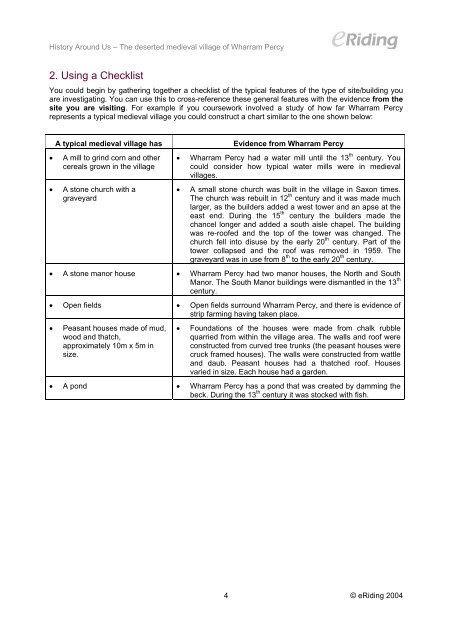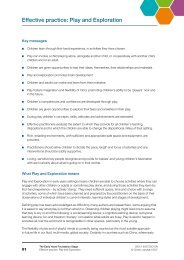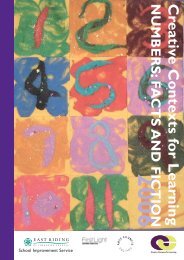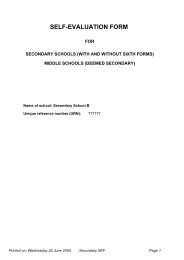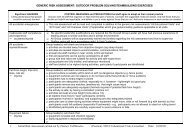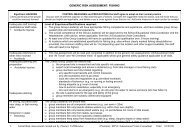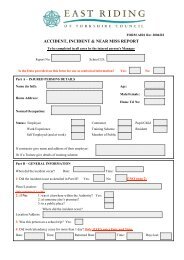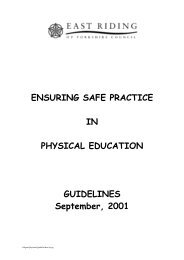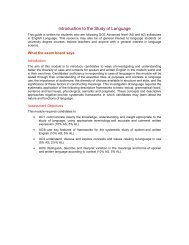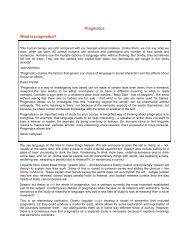GCSE Coursework: History Around Us - eRiding
GCSE Coursework: History Around Us - eRiding
GCSE Coursework: History Around Us - eRiding
You also want an ePaper? Increase the reach of your titles
YUMPU automatically turns print PDFs into web optimized ePapers that Google loves.
<strong>History</strong> <strong>Around</strong> <strong>Us</strong> – The deserted medieval village of Wharram Percy2. <strong>Us</strong>ing a ChecklistYou could begin by gathering together a checklist of the typical features of the type of site/building youare investigating. You can use this to cross-reference these general features with the evidence from thesite you are visiting. For example if you coursework involved a study of how far Wharram Percyrepresents a typical medieval village you could construct a chart similar to the one shown below:A typical medieval village has• A mill to grind corn and othercereals grown in the village• A stone church with agraveyardEvidence from Wharram Percy• Wharram Percy had a water mill until the 13 th century. Youcould consider how typical water mills were in medievalvillages.• A small stone church was built in the village in Saxon times.The church was rebuilt in 12 th century and it was made muchlarger, as the builders added a west tower and an apse at theeast end. During the 15 th century the builders made thechancel longer and added a south aisle chapel. The buildingwas re-roofed and the top of the tower was changed. Thechurch fell into disuse by the early 20 th century. Part of thetower collapsed and the roof was removed in 1959. Thegraveyard was in use from 8 th to the early 20 th century.• A stone manor house • Wharram Percy had two manor houses, the North and SouthManor. The South Manor buildings were dismantled in the 13 thcentury.• Open fields • Open fields surround Wharram Percy, and there is evidence ofstrip farming having taken place.• Peasant houses made of mud,wood and thatch,approximately 10m x 5m insize.• Foundations of the houses were made from chalk rubblequarried from within the village area. The walls and roof wereconstructed from curved tree trunks (the peasant houses werecruck framed houses). The walls were constructed from wattleand daub. Peasant houses had a thatched roof. Housesvaried in size. Each house had a garden.• A pond • Wharram Percy has a pond that was created by damming thebeck. During the 13 th century it was stocked with fish.4© <strong>eRiding</strong> 2004


